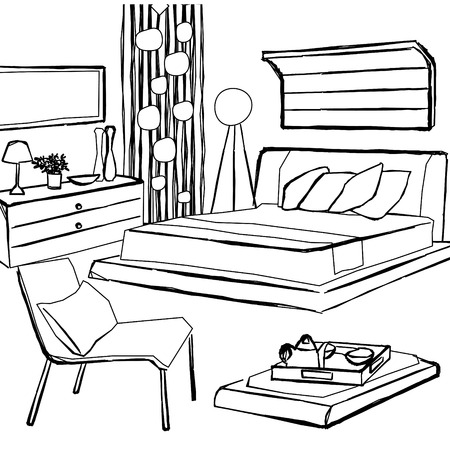Legacy of Heritage Zamindar Homes in Bengal and Odisha
The grandeur of heritage Zamindar homes stands as a timeless symbol of Bengal and Odishas rich cultural tapestry. Rooted deep in the Indian heartland, these stately estates were once the abodes of influential Zamindars—landlords who played pivotal roles in shaping regional society under British colonial rule and earlier kingdoms. These sprawling ancestral mansions are not merely architectural marvels but also living chronicles, narrating tales of prosperity, tradition, and community life.
Distinctive for their expansive courtyards, intricate terracotta work, and lofty columns, Zamindar homes display a blend of indigenous Bengali or Odia motifs with subtle European influences, reflecting the socio-economic status and refined tastes of their owners. Each structure was designed to accommodate extended families and host vibrant festivals, rituals, and gatherings that knit together local communities across generations.
Beyond bricks and mortar, these homes were strongholds of culture and learning—spaces where classical music, literature, fine arts, and culinary traditions flourished under the patronage of enlightened Zamindar families. Even today, despite changing times and urbanisation pressures, these heritage estates evoke nostalgia and pride among locals. The legacy they leave behind continues to inspire modern interpretations in Bengali and Odia home design, blending age-old values with contemporary sensibilities.
Architectural and Decorative Elements of Traditional Homes
Stepping into the world of heritage Zamindar homes, one is immediately enveloped by the distinct aura created through centuries-old Bengali and Odia architectural mastery. These homes are not just places to live; they are living stories, each wall echoing with cultural memories and festive celebrations. Let us explore some of the signature elements that have defined these spaces and continue to inspire modern transformations.
Terracotta Work: The Timeless Craft
Terracotta craftsmanship stands out as one of the most iconic features in both Bengali and Odia traditional homes. From intricate tiles to ornate panels on temple walls, this earthy art form brings warmth, texture, and storytelling into home facades and interiors. Terracotta reliefs often depict mythological scenes or local flora and fauna, creating a visual connection between daily life, nature, and spirituality.
Courtyards: The Heartbeat of Heritage Homes
The central courtyard or uthan (in Bengali) and angan (in Odia) serves as the vibrant heart of traditional dwellings. It’s here that families gather for pujas, seasonal festivals like Durga Puja or Raja Parba, and daily chores. Courtyards allow for natural light and ventilation, offering children space to play and elders a peaceful nook for evening tea.
Signature Architectural Details: A Quick Comparison
| Element | Bengali Homes | Odia Homes | Role in Culture & Festivals |
|---|---|---|---|
| Terracotta Panels | Used on outer walls & temples, narrating epics | Mainly in temples & entryways, featuring local motifs | Adds spiritual & artistic value during rituals |
| CourtYards (Uthan/Angan) | Central space for socializing & pujas | Multi-functional area for family gatherings & festivals like Raja Parba | Venue for family rituals & community bonding |
| Jharokhas (Overhanging Windows) | Lattice windows for privacy & air circulation | Decorative balconies enhancing façade aesthetics | Spot for viewing processions, enjoying monsoon rains |
| Jaali Patterns (Latticework) | Wooden or terracotta jaalis in verandahs & doors | Stone or brick jaalis in windows & partitions | Casts beautiful shadows during festivals, maintains privacy during gatherings |
The Role of Jharokhas and Jaali Patterns in Everyday Life
The jharokha—an ornamental overhanging window—graces many heritage homes across Bengal and Odisha. It provides residents with a glimpse of bustling street life while ensuring privacy. Complemented by jaali patterns, these elements facilitate natural airflow, keep interiors cool during hot summers, and create mesmerizing plays of light during daytime festivities.
An Enduring Legacy in Modern Transformations
As contemporary architects reimagine old Zamindar homes for modern needs, these architectural details remain at the core of design philosophy. Whether it’s a restored terracotta panel or a sunlit courtyard adapted as a reading lounge, their essence continues to infuse homes with warmth, elegance, and a deep sense of Indian identity.

Evolution Towards Modern Bengali & Odia Interiors
The journey from the grandeur of Zamindar homes to today’s vibrant urban residences reflects the rapid pace of change in Bengali and Odia lifestyles. As cities like Kolkata, Bhubaneswar, and Cuttack expand, traditional joint families are giving way to nuclear households, altering the very essence of home design. Urbanisation has not only condensed living spaces but also redefined how interiors must function to suit busy work schedules and modern aspirations.
In response, contemporary Bengali and Odia homes blend heritage aesthetics with present-day practicality. The ornate wooden columns and sprawling courtyards once central to Zamindar houses are now translated into statement furniture pieces, modular layouts, and multifunctional rooms that accommodate both work-from-home needs and family gatherings. The open-plan concept—previously uncommon—has become a norm in new apartments and renovated ancestral homes alike.
Moreover, changing family structures have led to interiors focusing on privacy and flexibility. Bedrooms double up as study nooks or entertainment zones, while kitchens are designed for efficiency rather than ceremonial grandeur. Yet, cultural roots remain strong; you’ll find handwoven dhokra artifacts from Odisha and kantha embroidery from Bengal seamlessly incorporated alongside sleek cabinetry and modern lighting.
This evolution is not just about aesthetics—it is a reflection of aspirations, adapting rituals, and the desire to stay connected with heritage even in compact urban settings. As Bengali and Odia families embrace global influences through technology and travel, their interiors narrate a story of continuity amid transformation, where the comfort of tradition meets the promise of modernity.
4. Integrating Heritage With Modern Design
Bringing together the old-world charm of Zamindar homes with contemporary Bengali and Odia design is an art that requires sensitivity, creativity, and practicality. For Indian homeowners, especially in West Bengal and Odisha, this means honouring family traditions while embracing the comforts of modern living. Here’s a practical guide to help you blend treasured heirlooms, locally sourced materials, and modern aesthetics for a home that celebrates its heritage yet feels fresh and inviting.
Preserving Heirlooms: Giving Old Memories New Life
Heirloom pieces such as antique wooden almirahs, brass utensils, or vintage Jamini Roy paintings are not just objects—they are carriers of stories and culture. Instead of hiding them away, display them as focal points in your living spaces. Refurbish old furniture with updated upholstery in ikat or kantha patterns, or use a traditional saree as a wall hanging for a touch of personal nostalgia.
Blending Local Materials With Modern Finishes
| Traditional Material | Modern Application |
|---|---|
| Bamboo & Cane | Cane chairs reimagined with sleek silhouettes for living rooms or patios |
| Terracotta Tiles | Used as accent walls or kitchen backsplashes alongside modular cabinetry |
| Patachitra Art Panels | Framed as statement pieces against minimalist white walls |
Design Tips for Seamless Integration
- Balance heavy carved wood with soft lighting and neutral colours to avoid a cluttered look.
- Mix textures by pairing silk cushions with contemporary linen sofas.
- Select local stone or red oxide flooring paired with modern rugs for comfort and easy maintenance.
Cultural Motifs Meet Contemporary Style
Bengali alpana designs or Odia appliqué work can be incorporated into wallpaper prints, cushion covers, or even custom tiles. Such details bring cultural authenticity while remaining accessible and easy to update over time.
Practical Considerations for Indian Homes
- Opt for modular storage solutions that can house both heirlooms and daily-use items.
- Choose finishes that withstand humidity and heat common in eastern India—think teakwood treated with natural oils or washable wall paints.
The result is a harmonious home where past and present coexist—reflecting your family’s journey while welcoming new memories in true Indian style.
5. Role of Colours, Textiles, and Handicrafts
Embracing Earthy Hues: A Connection to the Land
In both heritage Zamindar homes and contemporary Bengali & Odia interiors, colour is more than mere decoration—it is a reflection of local landscapes and an expression of warmth. Earthy hues like terracotta reds, mustard yellows, leafy greens, and deep indigos evoke the fertile plains of Bengal and Odisha, grounding spaces with a sense of place. These tones create a homely ambience, gently welcoming family and guests alike.
Pattachitra Art: Storytelling on Walls
Pattachitra, a traditional painting style from Odisha and West Bengal, adorns walls and panels in both heritage and modern settings. Its mythological motifs and vibrant storytelling not only add visual richness but also root homes in centuries-old narratives. Integrating Pattachitra art brings cultural pride into everyday living spaces while offering a unique Indian sophistication.
Bengal Kantha: Threads of Heritage
The humble kantha—hand-stitched with recycled saris—has evolved from rural craft to luxury statement. Used for bedspreads, cushion covers, or wall hangings, kantha work infuses rooms with texture, history, and a deeply personal touch. Each stitch narrates stories of generations past, blending nostalgia with present-day comfort.
Sambalpuri Ikat: The Weave of Odisha
Sambalpuri ikat textiles from Odisha are renowned for their intricate tie-dye technique and bold geometric patterns. Whether draped as curtains or fashioned into upholstery, these handlooms celebrate regional skill while adding vibrancy to modern interiors. Their unmistakable motifs echo Odisha’s artistic legacy within contemporary design frameworks.
Local Crafts: Everyday Luxury
From terracotta pottery to bamboo baskets, locally sourced handicrafts are integral to Bengali and Odia homes. These crafts foster sustainability and support artisan communities while introducing organic forms and tactile beauty into daily life. By weaving together colours, textiles, and handicrafts, today’s interiors achieve a warm yet grounded sense of luxury that honours heritage while embracing modern sensibilities.
6. Sustaining Cultural Identity Through Home Design
Today, homeowners in Bengal and Odisha are embracing a thoughtful approach to home design—one that beautifully balances the preservation of cultural heritage with the demands of modern living. This intentional design philosophy is not just about aesthetics; it is deeply rooted in a desire to honour family legacy, uphold traditions, and keep the unique spirit of Bengali and Odia cultures alive for future generations.
Blending Tradition with Modernity
Many families are renovating their ancestral zamindar homes or constructing new residences by drawing inspiration from age-old architectural details such as courtyards, carved wooden doors, intricate jaali work, and vibrant terracotta tiles. These traditional elements are artfully integrated into contemporary layouts featuring open plans, modular kitchens, and sustainable materials. The result is a harmonious fusion where classic charm meets urban convenience.
Celebrating Local Crafts and Artistry
Contemporary homeowners are also committed to supporting local artisans by incorporating handwoven textiles from Shantiniketan, Pattachitra wall murals from Odisha, or traditional bamboo and cane furniture into their décor. These choices create living spaces that feel authentically rooted in regional identity while encouraging the continuation of time-honoured crafts.
Spaces for Rituals and Togetherness
The importance of family gatherings and rituals remains central to Bengali and Odia households. Prayer rooms (puja ghars), spacious dining areas for festive feasts, and verandas for evening adda sessions are thoughtfully included in new home designs. These spaces nurture intergenerational bonds and ensure that daily life continues to be enriched by cultural values.
Innovating for Contemporary Needs
At the same time, modern amenities such as smart lighting, rainwater harvesting systems, energy-efficient appliances, and ergonomic workspaces are seamlessly incorporated. This blend allows families to enjoy the best of both worlds: preserving their treasured heritage while adapting gracefully to present-day lifestyles.
In essence, homes in Bengal and Odisha today stand as living testaments to resilience and creativity—where cultural identity is lovingly sustained through every brick, beam, and brushstroke, inspiring pride across generations.

